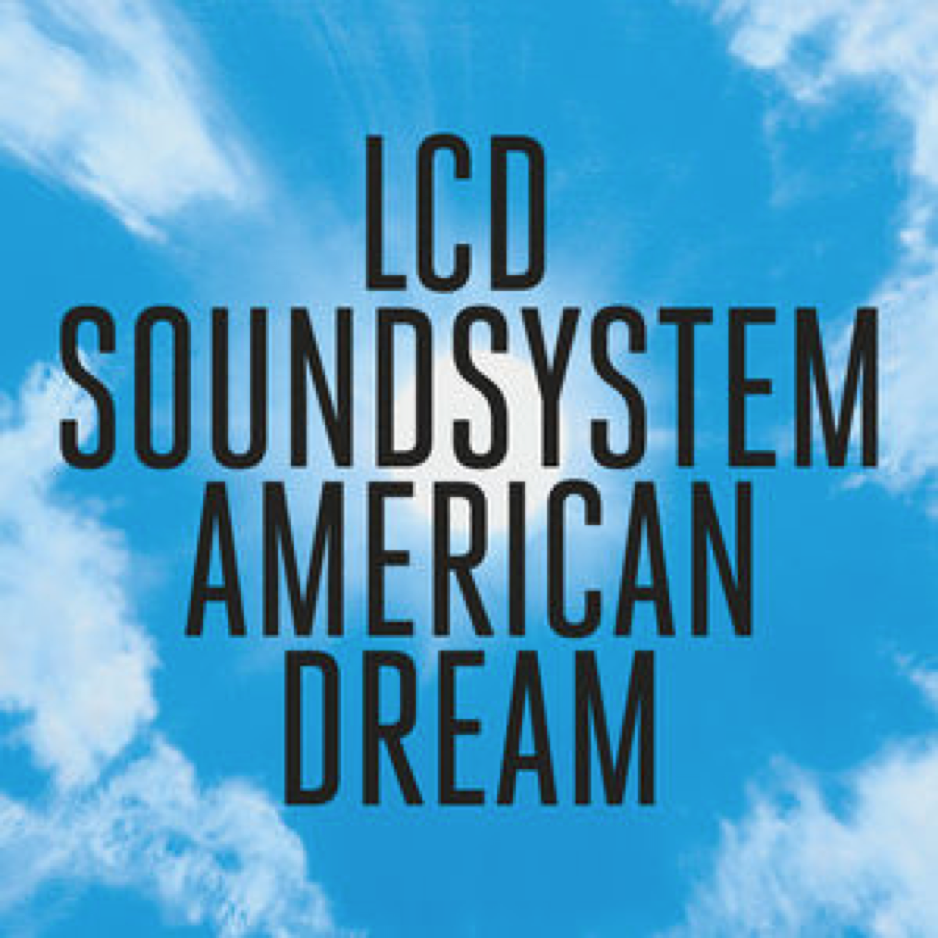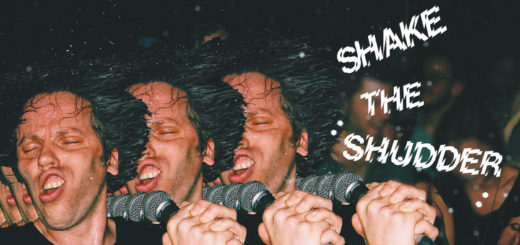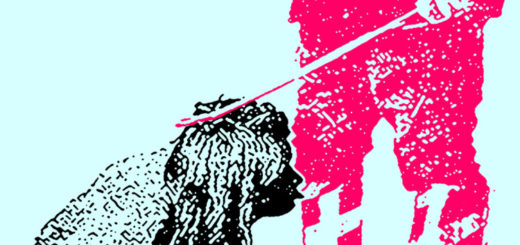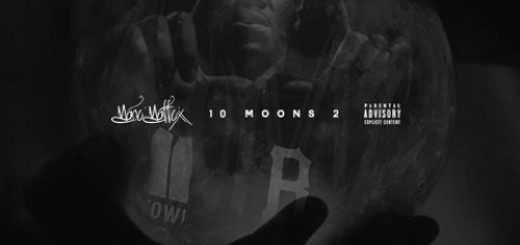AMERICAN DREAM by LCD Soundsystem

LCD Soundsystem – AMERICAN DREAM
Genre: New Wave, Dance-Punk
Favorite Songs: “how do you sleep?,” “call the police,” “american dream,”
I don’t think an album release has meant more to my immediate group of friends than AMERICAN DREAM has. Maybe Kendrick releasing TO PIMP A BUTTERFLY, but that felt like a moment when literally everyone was in on the conversation. It sometimes feels as though there are few things we all agree on, and our interests and tastes have (and will) become more varied and dispersed as we grow older in the internet age—something James Murphy has been droning on about in his music since LCD Soundsystem’s inception.
Part of the reason AMERICAN DREAM feels like a big deal is that, for both myself and most of my peers, it’s the first LCD Soundsystem album cycle that we were actually a part of. I discovered LCD Soundsystem in two parts: the first by hearing a few choice songs leading up to Bonnaroo in June of 2010, and later, at the end of that year, by fully immersing myself in THIS IS HAPPENING when it was being placed on “Best Of” lists. By the time I was regularly engaging with the band, they were calling it quits. It was in the subsequent years that my friends would become fans, and the rest is deeply rooted in our relationships with each other.
In that way, LCD Soundsystem is kind of miraculous; the way information moves and the speed at which it happens means we’re always on to the next thing. That James Murphy’s diary-entry dance-punk could become MORE popular over the subsequent years is unprecedented; name me a band in the 2000s who have broken up only to become incrementally more popular—Wolf Parade probably aren’t opening to the number one album in the country. This kind of instant nostalgia is normally reserved for artists right after death, but then again, I suppose the band’s “Back From The Dead” marketing surrounding those first reunion shows is fittingly self-aware.
The band’s return and the wave of nostalgia that came with it arrived to a host of questions, most of which revolved around the then-unknown AMERICAN DREAM release. What worthwhile sounds had LCD Soundsystem not tackled? What themes would they even address? Has the world moved on from Murphy’s brand of dance-punk? Do we even want a new album? These sometimes cynical questions slowly crept into the minds of the very people who wanted the band to come back, and they were fair questions—to have LCD Soundsystem play a show in front of you and to hear a new album are very distinctly different desires, and the latter required some real faith in the band to not besmirch their legacy.
AMERICAN DREAM, to its credit, is blissfully ignorant to its place in the LCD Soundsystem narrative. The album, unlike the recent press tour Murphy’s been on, isn’t really concerned with addressing things like the breakup and return, the Madison Square Garden show, or their runion’s impact on fans. Perhaps more interesting is how quick Murphy is to seemingly ignore what’s transpired during the interim, whether it be socially, politically, or really, even personally. AMERICAN DREAM is, smartly, an LCD Soundsystem record filled with all the middle-aged fears, snarky wisdom, and smartest-guy-in-the-room musings that we’ve come to expect from Murphy.
AMERICAN DREAM, for as much as it lyrically feels like Murphy’s inner monologue, is a different type of LCD Soundsystem record. He’s begun tapping into his influences, some he listed way back on “Losing My Edge,” and some we can only assume were left off that list that haven’t actually been explored before. The low rumbling drums on “change yr mind” echo the sounds of bands like The Fall or Siouxsie and the Banshees, and the sharp, angular dissonance of the guitar solos are akin to the chaos of Gang of Four or The Slits. Both the vocal approach and the arena-filling reverb on many of these tracks, notably “i used to” and “call the police,” are Bono-esque in execution, and “tonite” is as close to an actual Human League song as LCD Soundsystem have ever gotten.
In a broader sense, there are two different modes in which AMERICAN DREAM operates. The more jarring of the two is the Joy Division and post-punk dinginess that consumes some of these tracks: Murphy’s voice is far too high and vulnerable to be utilized like Ian Curtis’s, but the darkness in a lot of these songs (“emotional haircut,” “how do you sleep?,” “i used to”) mimics that band’s iconic, post-punk longing in ways older LCD Soundsystem records haven’t. Murphy’s music has always worn its influence on its sleeve, and a lot of that has to do with introducing his band with a song that specifically namechecks artists that populated his turntables (“GIL SCOTT HERON!”), but we haven’t heard dark LCD Soundsystem songs in a long while. We’d have to go back to the self-titled record, where a drug-fueled dancefloor nightmare like “Tribulations” could comfortably sit amongst other the band’s raw, punk-forward dance music, but even that song, or the band’s actual take on post-punk from that era (a cover of Siouxsie and the Banshees song “Slowdive”), don’t harness darkness the way AMERICAN DREAM does.
All these influences have been running through the lifeblood of LCD Soundsystem since their inception, but they’ve never quite come across this intensely. Murphy has always seemed musically interested in making people dance, and while AMERICAN DREAM has songs like “tonite” and “other voices” that both feature grinding synthesizers, cowbell, and classic LCD Soundsystem tropes, most of these songs don’t make me want to hit the dance floor. Even the second notable influence, the soft ballad, is a genre not traditionally associated with the band. Nonetheless, if fans of the older sound of LCD Soundsystem feel slighted in any way, they should at least appreciate songs like “oh baby,” the sweetest track Murphy has ever made, the late-night prom dance of “american dream,” and the cloudy lullaby closer “black screen.” The metallic sway of these ballads certainly differs from the inebriated swagger of a song like “Never As Tired As When I’m Waking Up,” or the pulsating, starry-eyed staple “Someone Great,” but they at least feel familiar, even if this is a different-sounding LCD Soundsystem.
At the very least, familiarity exists in Murphy’s lyricism, which remains as on-brand as ever, perhaps to a fault. Certainly we can’t expect a man who was consumed with fears of uncoolness and aging in his 30s to have overcome those things in his late 40s; in some ways those themes feel more natural now, and in other ways, they feel silly. “Time isn’t over, times aren’t better / So it’s letting you down / You keep dragging back to it / You keep going back to the well,” he speak-sings on “other voices,” a track that perhaps best encapsulates the feeling of internalizing your age amidst young people in the light of day. But a lot of AMERICAN DREAM seems content with age, rather than combatting it. Murphy spent his 30s losing his edge and then defending himself amidst the hipsters that were taking his place in youth culture; now, at 47-years old and a major figure in that youth culture, AMERICAN DREAM shows a sense of ease falling over Murphy. “But now more will go with age, you know / So get up and stop your complaining.”
Of all the questions surrounding the resurrection of the band, the one most central to me, my friends, and many of the fans that have currently propelled AMERICAN DREAM to be the number one album in the country on the Billboard charts is this: was this album worth muddying the waters of LCD Soundsystem’s narrative? Is AMERICAN DREAM a worthy successor to a trio of albums that are, for most people, perfect? And for this fan, the answer is yes. AMERICAN DREAM might not reach the highs of THIS IS HAPPENING or SOUND OF SILVER, but few albums have. What AMERICAN DREAM does well is not play into being the LCD Soundsystem record we were expecting, but rather provides just enough of the old while still turning its eye towards, and amplifying, influences we knew existed but had laid mostly dormant. Every time I hear the piano play out “black screen,” amidst a bouncing synth note that seems to be getting louder as the song goes on, I feel an immense amount of peace I haven’t felt listening to a closing track in some time. That musical passage offers a catharsis to LCD Soundsystem’s return that doesn’t require words, instilling a calm knowing that they’re glad to be back, and that I’m glad to have them.
Verdict: Recommend



